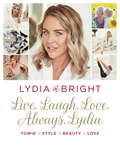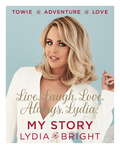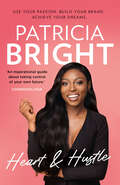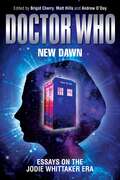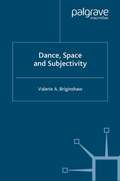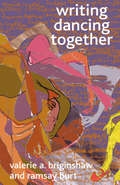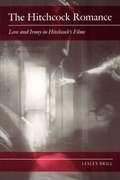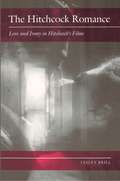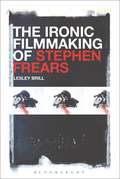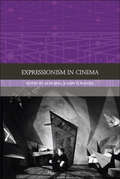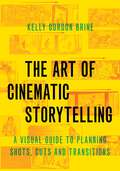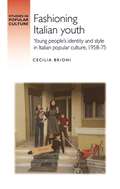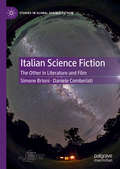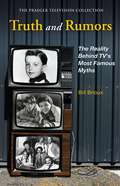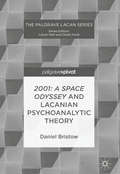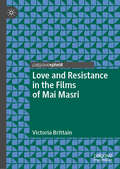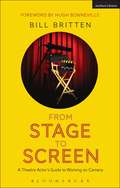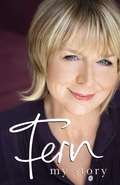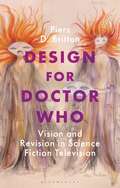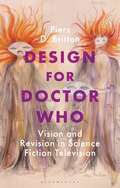- Table View
- List View
Live, Laugh, Love, Always, Lydia
by Lydia BrightFrom girl-next-door to overnight TOWIE stardom this is Lydia Bright's fabulous story so far.She grew up on one of the UK's biggest, BAFTA award-winning TV shows but there's still a lot you won't know about Lydia Bright as the confident beauty shares all for the first time!From fond family memories, first kisses and travelling around the world, to her dreams of an even more dazzling future, this is Lydia's full story - her greatest adventures yet - and your bubbly guide to living life to the full!TOWIE Find out what it was really like to be an Essex It GirlRELATIONSHIPS Lydia opens her heart and shares 5 rules for a flawless first dateFITNESS The workout routine she follows to get bikini-ready, plus recipes!BEAUTY Get the look; with makeup tutorials, product tips and style secretsINSPIRATIONAL QUOTES What drives her positivity, motivation and success?BUSINESS From budding fashionista to launching her own boutique and 3 clothing collectionsADVENTURE Help from a fearless globetrotter to take your trip of a lifetimePacked with lots of extra surprises, crazy stories and even more reasons to fall in love with Lydia's unstoppable attitude, LIVE, LAUGH, LOVE, ALWAYS, LYDIA is the fairy-tale-turned-reality that's only just getting started!
Live, Laugh, Love, Always, Lydia: My Story (ebook)
by Lydia BrightLydia Bright has A LOT to shout about.From her childhood in a foster family full of love, to essentially growing up on one of the UK's biggest TV reality shows, in LIVE, LAUGH, LOVE, ALWAYS LYDIA: MY STORY, Lydia leaves no stone un-turned. Sharing everything from first kisses, first times and first holidays to all the TOWIE goss and what really happened in her relationship with Arg, this is a story of adventure, fun and love from one of the nation's favourite TV stars.*LIVE, LAUGH, LOVE, ALWAYS LYDIA: THE STORY is an abridged version of LIVE, LAUGH, LOVE, ALWAYS LYDIA, first published in June 2017*
Heart and Hustle: Use Your Passion. Build Your Brand. Achieve Your Dreams
by Patricia Bright‘Patricia Bright is killing it right now’ Glamour ‘One of Britain’s biggest YouTube stars’ Huffington Post ‘I’m going to show you how to hustle like I do, using your head and heart. All it takes is three steps…’
Doctor Who – New Dawn: Essays on the Jodie Whittaker era
by Brigid Cherry, Matt Hills and Andrew O’DayDoctor Who – new dawn explores the latest cultural moment in this long-running BBC TV series: the casting of a female lead. Analysing showrunner Chris Chibnall and Jodie Whittaker’s era means considering contemporary Doctor Who as an inclusive, regendered brand. Featuring original interview material with cast members, this edited collection also includes an in-depth discussion with Segun Akinola, composer of the iconic theme tune’s current version. The book critically address the series’ representations of diversity, as well as fan responses to the thirteenth Doctor via the likes of memes, cosplay and even translation into Spanish as a grammatically gendered language. In addition, concluding essays look at how this moment of Who has been merchandised, especially via the ‘experience economy’, and how official/unofficial reactions to UK lockdown helped the show to further re-emphasise its public-service potential.
Dance, Space and Subjectivity
by V. BriginshawThis book contains readings of American, British and European postmodern dances informed by feminist, postcolonialist, queer and poststructuralist theories. It explores the roles dance and space play in constructing subjectivity. By focusing on site-specific dance, the mutual construction of bodies and spaces, body-space interfaces and 'in-between spaces', the dances and dance films are read 'against the grain' to reveal their potential for troubling conventional notions of subjectivity associated with a white, Western, heterosexual able-bodied, male norm.
Writing Dancing Together
by V. Briginshaw Ramsay BurtWith a political agenda foregrounding collaborative practice to promote ethical relations, these individually and joint written essays and interviews discuss dances often with visual art, theatre, film and music, drawing on continental philosophy to explore notions of space, time, identity, sensation, memory and ethics.
The Hitchcock Romance: Love and Irony in Hitchcock's Films
by Lesley BrillWas Alfred Hitchcock a cynical trifler with his audience's emotions, as he liked to pretend? Or was he a profoundly humane artist? Most commentators leave Hitchcock's self-assessment unquestioned, but this book shows that his movies convey an affectionate, hopeful understanding of human nature and the redemptive possibilities of love. Lesley Brill discusses Hitchcock's work as a whole and examines in detail twenty-two films, from perennial favorites like North by Northwest to neglected masterpieces like Rich and Strange.
The Hitchcock Romance: Love and Irony in Hitchcock's Films
by Lesley BrillWas Alfred Hitchcock a cynical trifler with his audience's emotions, as he liked to pretend? Or was he a profoundly humane artist? Most commentators leave Hitchcock's self-assessment unquestioned, but this book shows that his movies convey an affectionate, hopeful understanding of human nature and the redemptive possibilities of love. Lesley Brill discusses Hitchcock's work as a whole and examines in detail twenty-two films, from perennial favorites like North by Northwest to neglected masterpieces like Rich and Strange.
The Hitchcock Romance: Love and Irony in Hitchcock's Films
by Lesley BrillWas Alfred Hitchcock a cynical trifler with his audience's emotions, as he liked to pretend? Or was he a profoundly humane artist? Most commentators leave Hitchcock's self-assessment unquestioned, but this book shows that his movies convey an affectionate, hopeful understanding of human nature and the redemptive possibilities of love. Lesley Brill discusses Hitchcock's work as a whole and examines in detail twenty-two films, from perennial favorites like North by Northwest to neglected masterpieces like Rich and Strange.
The Ironic Filmmaking of Stephen Frears
by Lesley BrillStephen Frears has a career approaching over half-a-century, directing films of astonishing variety, beauty, and daring, and yet many often have trouble remembering his name. The Ironic Filmmaking of Stephen Frears celebrates this great filmmaker, beginning with a short biography of Frears, general observations on unifying themes and styles in his oeuvre, and the characterization of his manner of directing. By focusing on 10 key films, Lesley Brill finds coherence in Frears' characteristic irony and in his concentration on many kinds of love. In movies such as My Beautiful Laundrette, Dangerous Liaisons, High Fidelity, The Queen, Philomena, and many others, Frears portrays widely varied situations and characters with a combination of insight, skepticism, and sympathy. He has the passionate, unjudgmental focus of an artist who stands simultaneously at a distance from his subjects and within their worlds. Through Frears' work is widely admired, Brill argues that he has attracted little scholarly writing because of a combination of the diffidence of his self-presentation and the difficulty of explicating the complex ideas and characters of his films. The Ironic Filmmaking of Stephen Frears is meant to inspire others to further examine his films individually and his career as a whole.
The Ironic Filmmaking of Stephen Frears
by Lesley BrillStephen Frears has a career approaching over half-a-century, directing films of astonishing variety, beauty, and daring, and yet many often have trouble remembering his name. The Ironic Filmmaking of Stephen Frears celebrates this great filmmaker, beginning with a short biography of Frears, general observations on unifying themes and styles in his oeuvre, and the characterization of his manner of directing. By focusing on 10 key films, Lesley Brill finds coherence in Frears' characteristic irony and in his concentration on many kinds of love. In movies such as My Beautiful Laundrette, Dangerous Liaisons, High Fidelity, The Queen, Philomena, and many others, Frears portrays widely varied situations and characters with a combination of insight, skepticism, and sympathy. He has the passionate, unjudgmental focus of an artist who stands simultaneously at a distance from his subjects and within their worlds. Through Frears' work is widely admired, Brill argues that he has attracted little scholarly writing because of a combination of the diffidence of his self-presentation and the difficulty of explicating the complex ideas and characters of his films. The Ironic Filmmaking of Stephen Frears is meant to inspire others to further examine his films individually and his career as a whole.
Expressionism in the Cinema (Traditions in World Cinema)
by Olaf Brill Gary D RhodesOne of the most visually striking traditions in cinema, for too long Expressionism has been a neglected critical category of research in film history and aesthetics. The fifteen essays in this anthology remedies this by revisiting key German films like The Cabinet of Dr. Caligari (1920) and Nosferatu (1922), and also provide original critical research into more obscure titles like Nerven (1919) and The Phantom Carriage (1921), films that were produced in the silent and early sound era in countries ranging from France, Sweden and Hungary, to the United States and Mexico. An innovative and wide-ranging collection, Expressionism in the Cinema re-canonizes the classical Expressionist aesthetic, extending the critical and historical discussion beyond pre-existing scholarship into comparative and interdisciplinary areas of film research that reach across national boundaries.
The Art of Cinematic Storytelling: A Visual Guide to Planning Shots, Cuts, and Transitions
by Kelly Gordon BrineTo dramatize a story using moving images, a director must have a full understanding of the meaning and emotional effect of all the various types of shots and cuts that are available to advance the story. Drawing upon his extensive experience as a storyboard artist who has worked with over 200 directors and cinematographers on television series and movies, author Kelly Gordon Brine provides a practical and accessible introduction to the design of shots, cuts, and transitions for film, television, animation, video, and game design. With hundreds of illustrations and diagrams, concise explanations of essential storytelling concepts, and vivid examples, The Art of Cinematic Storytelling demystifies the visual design choices that are fundamental to directing and editing. The author delves deeply into the techniques that visual storytellers use to captivate their audience, including blocking, camera positioning, transitions, and planning shots with continuity editing in mind. Practical advice on how to clarify time, space, and motion in many common situations such as dialogue, pursuits, and driving sequences makes this book an invaluable guide for all aspiring filmmakers.
ART OF CINEMATIC STORYTELLING C: A Visual Guide to Planning Shots, Cuts, and Transitions
by Kelly Gordon BrineTo dramatize a story using moving images, a director must have a full understanding of the meaning and emotional effect of all the various types of shots and cuts that are available to advance the story. Drawing upon his extensive experience as a storyboard artist who has worked with over 200 directors and cinematographers on television series and movies, author Kelly Gordon Brine provides a practical and accessible introduction to the design of shots, cuts, and transitions for film, television, animation, video, and game design. With hundreds of illustrations and diagrams, concise explanations of essential storytelling concepts, and vivid examples, The Art of Cinematic Storytelling demystifies the visual design choices that are fundamental to directing and editing. The author delves deeply into the techniques that visual storytellers use to captivate their audience, including blocking, camera positioning, transitions, and planning shots with continuity editing in mind. Practical advice on how to clarify time, space, and motion in many common situations such as dialogue, pursuits, and driving sequences makes this book an invaluable guide for all aspiring filmmakers.
Fashioning Italian youth: Young people's identity and style in Italian popular culture, 1958-75 (Studies in Popular Culture)
by Cecilia BrioniFashioning Italian youth examines popular media representations of Italian young people’s style trends and bodily practices from 1958–75. By looking at visual and written representations of transnational youth trends – like urlatori, amici, beats and hippies – in Italian teen magazines, Musicarelli films and youth-oriented television programmes, it investigates changes in the social construction of Italian young people’s political, generational, national, ethnic and gender identities. The monograph connects the emergence of youth-oriented transnational trends to the national and global history of young people, and explores the dynamics that contributed to the construction of a specifically Italian youth culture in this period.
Italian Science Fiction: The Other in Literature and Film (Studies in Global Science Fiction)
by Simone Brioni Daniele ComberiatiThis book explores Italian science fiction from 1861, the year of Italy’s unification, to the present day, focusing on how this genre helped shape notions of Otherness and Normalness. In particular, Italian Science Fiction draws upon critical race studies, postcolonial theory, and feminist studies to explore how migration, colonialism, multiculturalism, and racism have been represented in genre film and literature. Topics include the role of science fiction in constructing a national identity; the representation and self-representation of “alien” immigrants in Italy; the creation of internal “Others,” such as southerners and Roma; the intersections of gender and race discrimination; and Italian science fiction’s transnational dialogue with foreign science fiction. This book reveals that though it is arguably a minor genre in Italy, science fiction offers an innovative interpretive angle for rethinking Italian history and imagining future change in Italian society.
Truth and Rumors: The Reality Behind TV's Most Famous Myths (The Praeger Television Collection)
by Bill BriouxWhen you first heard it, you couldn't believe it: Jerry Mathers, from TV's Leave It To Beaver, had been killed in Vietnam. Then word came that Abe Vigoda, the actor who played the curmudgeonly cop Fish on Barney Miller, was dead; and that Mikey, who would eat anything as the Life Cereal tyke, had eaten too many Pop Rocks and exploded. Besides exposing us to things we couldn't otherwise believe, television can convince us of things that never actually happened. But how did these outrageous TV legends get started? How did they spread from classrooms to boardrooms across North America and beyond? And, most important, what do these rumors, so quickly transformed into facts and common knowledge, reveal about our relationship to reality through the medium of television? Put in other words, what exactly is it that were doing when were dealing in these fabulous rumors—are we chasing after surprising truths or simply more incredible entertainment?To take one telling example: Jerry Mathers was not actually killed in Vietnam—but the basic sense of this lie wasn't far removed from the emotions factually expressed in the two-page spread of the faces of the dead in Time magazine. In the course of this compelling work—which is supplemented with interviews with many of the people implicated in these rumors—author Bill Brioux exposes the reality behind the many stories that currently circulate in our culture. Through these stories (both true and false), he sheds a revealing light on just what role these rumors play in contemporary society—and what role our society plays in regard to these rumors as well.
2001: A Space Odyssey and Lacanian Psychoanalytic Theory
by Daniel BristowIn 1968, Stanley Kubrick completed and released his magnum opus motion picture 2001: A Space Odyssey; a time that was also tremendously important in the formation of the psychoanalytic theory of Jacques Lacan. Bringing these figures together, Bristow offers a study that goes beyond, as the film did. He extends Lacan’s late topological insights, delves into conceptualisations of desire, in G. W. F. Hegel, Alexandre Kojève, and Lacan himself, and deals with the major themes of cuts (filmic and psychoanalytic); space; silence; surreality; and ‘das Ding’, in relation to the movie’s enigmatic monolith. This book is a tour de force of psychoanalytic theory and space odyssey that will appeal to academics and practitioners of psychoanalysis and film studies, as well as to any fan of Kubrick’s work.
2001: A Space Odyssey and Lacanian Psychoanalytic Theory
by Daniel BristowIn 1968, Stanley Kubrick completed and released his magnum opus motion picture 2001: A Space Odyssey; a time that was also tremendously important in the formation of the psychoanalytic theory of Jacques Lacan. Bringing these figures together, Bristow offers a study that goes beyond, as the film did. He extends Lacan’s late topological insights, delves into conceptualisations of desire, in G. W. F. Hegel, Alexandre Kojève, and Lacan himself, and deals with the major themes of cuts (filmic and psychoanalytic); space; silence; surreality; and ‘das Ding’, in relation to the movie’s enigmatic monolith. This book is a tour de force of psychoanalytic theory and space odyssey that will appeal to academics and practitioners of psychoanalysis and film studies, as well as to any fan of Kubrick’s work.
Love and Resistance in the Films of Mai Masri (Palgrave Studies in Arab Cinema)
by Victoria BrittainThis book covers Mai Masri’s three decades documenting iconic moments of Palestinian and Lebanese linked history. Her films, unique for giving agency to her subjects, tell much about the untold, unseen people, namely women and children, who lived these experiences of war and occupation. Former Lebanese political prisoner Soha Bechara praised her feature film 3000 Nights as “the ‘Lest we forget’ of Palestine." Her focus on the social and political climates of the vivid lives of unseen people connects to the deepening violence in Palestine today.
From Stage to Screen: A Theatre Actor's Guide to Working on Camera
by Bill BrittenThe camera enables us to see right into a character's soul, revealing his or her innermost thoughts and emotions. Screen acting requires a more rigorously truthful and spontaneous performance than the stage, as well as very different technical expertise. From Stage to Screen is a handbook for the professional actor packed with advice on how to make the transition and fully prepare for a TV or film role.The book is divided into three sections: the first examines the relationship between the actor and the camera and how it differs from that of a performer with a stage audience; the second addresses the technical skills the screen actor needs in order to work as part of a large collaborative team and 'make the shot work'; and the third explores the very different experience of an actor working on a screen project, including getting the job, how to prepare properly, what to expect and how to manage the whole process, from casting through to ADR, in order to deliver the very best work.
From Stage to Screen: A Theatre Actor's Guide to Working on Camera
by Bill BrittenThe camera enables us to see right into a character's soul, revealing his or her innermost thoughts and emotions. Screen acting requires a more rigorously truthful and spontaneous performance than the stage, as well as very different technical expertise. From Stage to Screen is a handbook for the professional actor packed with advice on how to make the transition and fully prepare for a TV or film role.The book is divided into three sections: the first examines the relationship between the actor and the camera and how it differs from that of a performer with a stage audience; the second addresses the technical skills the screen actor needs in order to work as part of a large collaborative team and 'make the shot work'; and the third explores the very different experience of an actor working on a screen project, including getting the job, how to prepare properly, what to expect and how to manage the whole process, from casting through to ADR, in order to deliver the very best work.
Fern: My Story
by Fern BrittonThe much-loved TV star Fern Britten tells her story for the first time in her Sunday Times bestselling memoir.For years now, Fern Britton has been widely loved as the presenter ofReady Steady Cook, and, more recently, co-presenter of This Morning with Philip Schofield. Never one to shy away from a good laugh or cry on national TV, she has none-the-less never talked about herself to the public, preferring to keep her private life private. Her warmth and humour, empathy and compassion, have made her feel like a best friend to millions on a daily basis, but no one knows the woman behind the sparkling smile.Now, for the first time, she is going to tell her story. And it is one that will strike a chord with women everywhere. Life as a child was not always easy, and she faced private and public challenges with her personal life, appearance and her career as she climbed the ladder to fame. Now a full-time working mum, with a very happy marriage to her second husband Phil Vickery, she is at the top of her game, and ready to tell it like it is. So put your feet up and get ready for a great read with Fern Britten.Fern Britten grew up in Buckinghamshire, and started her career on Westward Television, before moving to GMTV and Ready Steady Cook. She later co-presented This Morning with Philip Schofield, and has become a much sought after presenter for shows including Have I Got News For You, Soap Star Superstar and Celebrity Mr and Mrs. She recently wowed audiences with her performance on Strictly Come Dancing. She lives in Buckinghamshire with her husband Phil Vickery and their four children.
Design for Doctor Who: Vision and Revision in Screen SF (Who Watching)
by Piers D. BrittonThe long-running popular TV series Doctor Who is, Piers Britton argues, a 'uniquely design intensive text': its time-and-space-travel premise requires that designers be tirelessly imaginative in devising new worlds and entities and recreating past civilizations. While Doctor Who's attempts at worldbuilding are notorious for being hit-and-miss – old jokes about wobbly walls and sink plungers die hard – the distinctiveness of the series' design imagery is beyond question. And over the course of six decades Doctor Who has produced designs which are not only iconic but, in being repeatedly revisited and updated, have proven to be an ever-more important element in the series' identity and mythos.In the first in-depth study of Doctor Who's costumes, sets and graphics, Piers Britton offers an historical overview of both the original and the revived series, explores theoretical frameworks for evaluating Doctor Who design, and provides detailed analysis of key images. Case studies include the visual morphology of Doctor Who's historical adventures, the evaluative character of cosplay, and the ongoing significance for the Doctor Who brand of such high-profile designs as the Daleks and the TARDIS interior, the 'time-tunnel' title sequence, and the costumes of the Fourth and Thirteenth Doctors.
Design for Doctor Who: Vision and Revision in Screen SF (Who Watching)
by Piers D. BrittonThe long-running popular TV series Doctor Who is, Piers Britton argues, a 'uniquely design intensive text': its time-and-space-travel premise requires that designers be tirelessly imaginative in devising new worlds and entities and recreating past civilizations. While Doctor Who's attempts at worldbuilding are notorious for being hit-and-miss – old jokes about wobbly walls and sink plungers die hard – the distinctiveness of the series' design imagery is beyond question. And over the course of six decades Doctor Who has produced designs which are not only iconic but, in being repeatedly revisited and updated, have proven to be an ever-more important element in the series' identity and mythos.In the first in-depth study of Doctor Who's costumes, sets and graphics, Piers Britton offers an historical overview of both the original and the revived series, explores theoretical frameworks for evaluating Doctor Who design, and provides detailed analysis of key images. Case studies include the visual morphology of Doctor Who's historical adventures, the evaluative character of cosplay, and the ongoing significance for the Doctor Who brand of such high-profile designs as the Daleks and the TARDIS interior, the 'time-tunnel' title sequence, and the costumes of the Fourth and Thirteenth Doctors.
